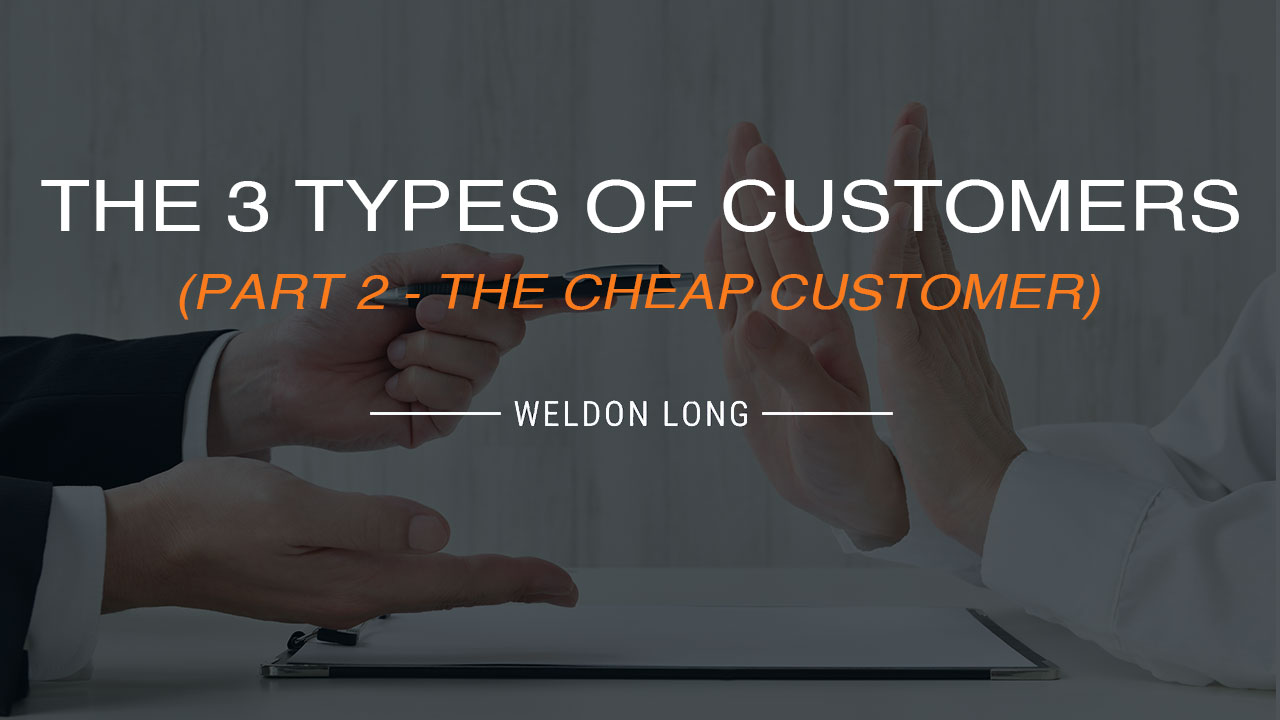The 3 Types of Customers (Part 2 – The Cheap Customer)
April 6, 2023
Part 1 – The Value Based Customer can be found here.
We all know this customer. Your sales team may even have colorful nicknames for this type of customer. The “cheap guy,” of course, is just the opposite of the value-based customer.
The cheap guy cares about one thing — a cheap price. They are not concerned about value. They don’t want to hear your pitch, demo or presentation. They usually don’t even let you finish your sentence. The moment they walk in, they ask and repeat, “How much is it, how much is it, how much is it?”
These first two different types of customers, the value-based and the cheap guy, they’re very, very different. BUT… they do have one very important thing in common.
The Big D
Even though they’re very different, both the value-based consumer and the cheap consumer, at some point in the sales process, are both going to ask you for a discount. This is done mainly out of habit, out of human nature. Most customers will ask. The difference is that the value-based customer will still buy from you even if you do not drop your price.
The cheap consumer is not going to go with you unless you drop your price. Or at the very least, they keep shopping prices elsewhere, unless your store is the cheapest already. If it is, it’s probably working harder than smarter.
Here’s the gist of a typical conversation between a salesperson and these two types of customers:
Value-based: Hey, man, can you do better than that price?
Salesperson: Well, no, I can’t, and here’s why…
Value-based: Oh, I see. Okay, let’s go ahead and do it.
Cheap: How much could you drop the price?
Salesperson: I can’t drop the price.
Cheap: Well, I’m going with somebody else then.
Going Out of Business Sale
So here’s what ends up happening:
If you get in the habit of dropping your price very quickly as your default response, basically as soon as there’s some resistance, you’ll feel the pain when your own payday arrives. If you start saying, “Yeah, I think we could knock off a couple hundred bucks,” a chemical kicks in and makes them want to ask for even more of a price cut. It’s like trying to eat just one small bite of chocolate. The brain tells you that a little more won’t hurt.
If you say yes to either type of customer when they ask you for a discount, you end up giving hundreds of dollars in margin that could have been partly yours and partly the store’s. Remember, the value-based guy would have bought from you anyway, even if you had said no to the discount.
Now, saying no to a customer properly is a skill every salesperson should learn, and that’s what my sales process teaches you to do.
Tipping Them Off
If the cheap guy asked for a $500 discount, and you say yes, what happens? He asks you for ANOTHER $500 discount. Your first price cut lets him know that there was wiggle room in your original price. And if you quickly discount the price $500, he figures there must be even MORE wiggle room to negotiate until you’re left with zero profit and/or zero commission.
When you dish out discounts, you may get the business but you quickly regret it.
We may not realize it, but we end up giving money back to the value-based guy who was willing to pay us what we needed to run our business effectively and make a fair profit. I realize that we as shoppers want to buy everything at cost, but we as business owners would quickly go out of business selling at cost. There are inherent costs to running a business, including overhead and profit, without which we couldn’t function.
Again, if you drop the price for the value guy, you didn’t have to.
If you drop the price for the cheap guy, he’s going to want more.
The third and final major type of customer is the… undecided customer. We will talk soon about their tendencies and habits, and how to best interact with them.


